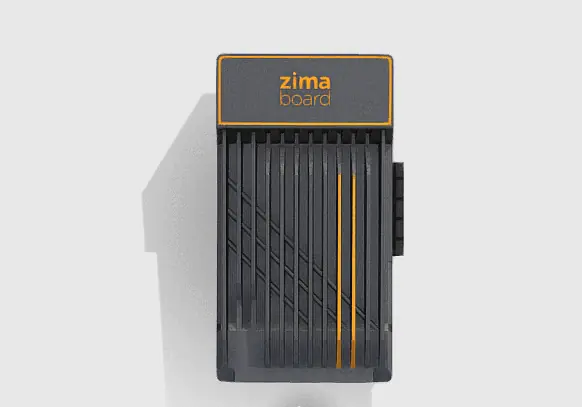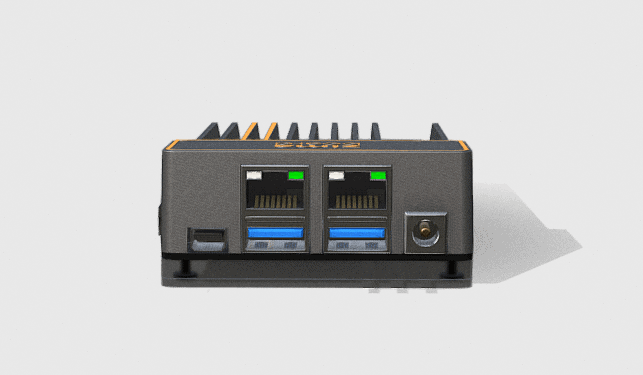ZimaBoard 832 Hackable Single Board Server Review: Is This The Right Choice?
6 min. read
Updated on
Read our disclosure page to find out how can you help MSPoweruser sustain the editorial team Read more

Do you want to step up how you use your devices, such as your computer, in a major way? You might want to consider owning and giving it a single-board server.
Single board servers are a type of computer server built on a single printed circuit board or PCB. They are a compact and integrated system that already possesses all the vital components of a server, including a processor (CPU), storage, memory (RAM), networking interfaces, and other necessary peripherals – all within a single board. These kinds of servers are designed for space-constrained environments or applications where a small form factor is desirable.
If that encouraged you to try the single board server, searching around online will provide you with many options. You can conveniently shop for this over the Internet, as several companies offer it. However, there is one in particular that has been gaining popularity recently. That is, the ZimaBoard. This article will review a product in its catalog, the ZimaBoard 832 hackable single-board server.
ZimaBoard Is The World’s First Hackable Single Board Server: The Overview
First, let us give you an overview of what this product is all about.
What Is ZimaBoard?
Calling itself the world’s first hackable single-board server, ZimaBoard pertains to a low-cost single-board server designed exclusively for creators and, yes, geeks. It features both the expandability of an x86 single-board computer or SBC, and the appropriate power of a microserver. In other words, it is a hybrid of those two.
Just by looking at those details, you can tell that ZimaBoard is a good product. Furthermore, it has been featured in various media, such as Geeky Gadgets, TechRadar Pro, and Electronics Weekly, among many others.
This time, let us turn our gaze upon one of its products we are reviewing, the ZimaBoard 832.
The ZimaBoard 832
ZimaBoard has various products in its catalog – the ZimaBoard 216, ZimaBoard 432, and the ZimaBoard 832. The focus of our review, for now, is ZimaBoard 832. For those of you hearing about this ZimaBoard personal server for the first time, keep reading.
What is ZimaBoard 832? ZimaBoard 832 is generally a low-cost single board server already equipped with Intel Celeron N3450 Quad Core distinctively functioning as a 4T free charge cloud server with a 4K display media server. This single-board server helps manage onboard 32GB eMMC and high-speed storage data at 8G RAM. Moreover, it is also well-secured with its standard interface and VPN. Right now, we can say that ZimaBoard 832 is worth your investment. But let’s find out more about it.
It Comes From A Great Company, IceWhale Technology
ZimaBoard comes from IceWhale Technology. IceWhale Technology is a developer of network-attacked storage products that enhance and even lower the cost of every digital experience at home.
Founded in 2020 and based in Shanghai, China, this company aims to empower families all over the globe to own and manage their own cloud without the fear of compromising their privacy. They do this through their products, such as the ZimaBoard 832.
ZimaBoard 832 Pros And Cons
We present its pros and cons to help you decide whether this single-board server is right for you.
The Pros
- ZimaBoard 832 offers powerful performance and runs a wide range of applications.
- It features an easy one-click install for popular software applications.
- Its overall package is not too big.
The Cons
- Its passive cooling solution can, at times, get hot.
- The software can sometimes be a little bit buggy.
What ZimaBoard Can Do
Having learned what the product is about, the company that creates it, and its pros and cons, you now have a better idea of whether you will invest in this or not. But wait, let’s keep learning and see what ZimaBoard can do for its users.
First, ZimaBoard lets users expand their personal cloud easily to 36 TB disk space (2x SATA) as their data grow. With this, they are able to enjoy the experience of fast reading and writing, just like when their local hard disk is connected via a gigabit network.
With its superior compatibility with its x86 chipset, users may also transform this single-board server into a hardware router. Thus, they can run lightweight services such as FTP servers, create secure VPN connections, set up the private access to their computers in the office, and more.
ZimaBoard also installed the Plex Media Server, drastically changing how users browse and enjoy their personal media library. They can organize their media and stream their favorite films and TV shows anywhere on all their devices. You read that right, all your devices.
Additionally, with ZimaBoard, users can also collaborate better with their teammates over documents and spreadsheets in a protected environment. Using this single-board server, they can set up large volumes of the shared disk, whether at home or in the office. They can edit photos, videos, and documents with others on multiple systems and in real-time.’
ZimaBoard, as a personal server and an x86 microserver, also offers incredible development possibilities and performance. For instance, this is the perfect choice for git, web, Minecraft servers, and so much more.
Users can also have ZimaBoard for data collection, buffering, and pre-processing to have accurate and effective Internet of Things or IoT data on-site for the cloud or local server. It offers instant decision-making and agile responses that significantly reduce cloud and network infrastructure dependence.
Likewise, the company behind it, IceWhale Technology, also complements ZimaBoard with an easy-to-use, elegant, and open-home cloud OS known as CasaOS. It is a community-based open-source software that delivers the simplest and most straightforward home cloud experience around the Docker ecosystem.
How Much Does It Cost?
The price of ZimaBoard 832 is around $200. It is the most expensive ZimaBoard variant. But with this, you already get the following: Quad Core 1.1-2.2GHz, 8G Dual Channel LPDDR4, 32GB eMMC Storage, 2x SATA 6.0 Gb/s, and 2x GbE LAN.
The Verdict
We hope those details have given you an idea should you want to purchase this product for your devices. Single-board servers are typically utilized for various purposes. These include IoT deployments, edge computing, small-scale server applications, and embedded systems.
They can also be used as standalone servers or integrated into bigger systems to perform specific tasks, including data storage and processing or networking functions. Note also that some single board servers are designed for specialized use scenarios, such as home servers, media servers, network-attacked storage, or NAS servers.
If you are looking for a versatile product of this kind that can provide what you need, we strongly recommend that you give ZimaBoard 832 a try. While others think it may be a bit expensive, it is worth your investment for us.









User forum
0 messages